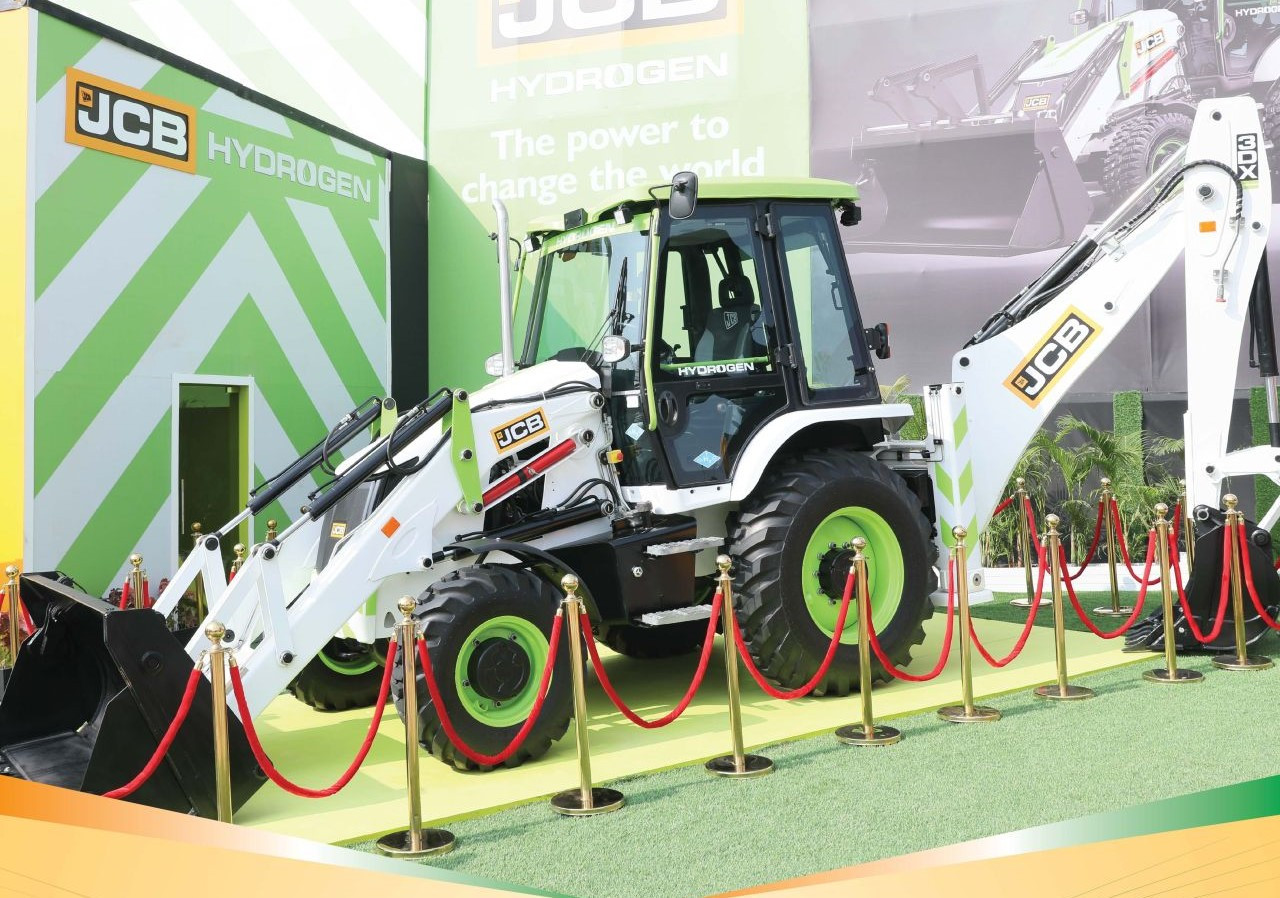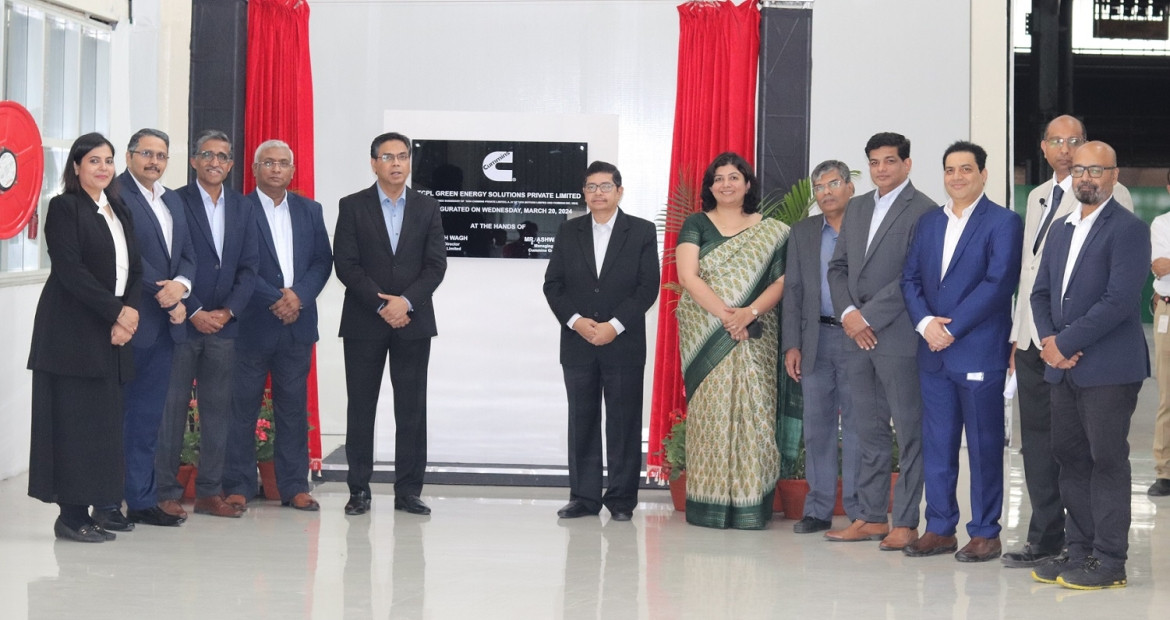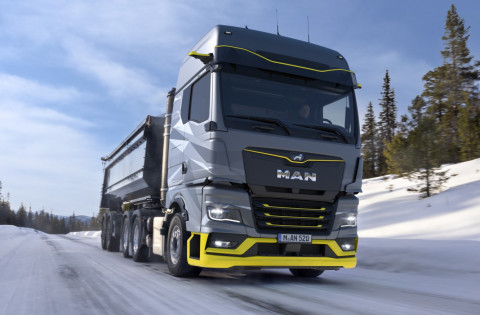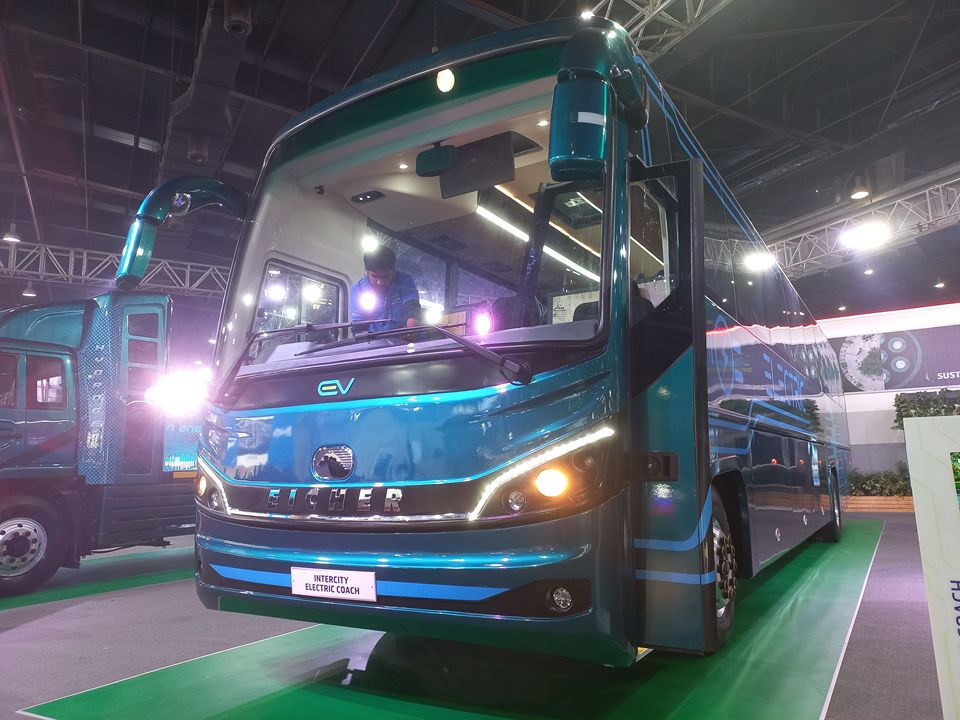The bulk of commercial transportation in India comprises the medium- and heavy-duty truck and bus segments that are difficult to decarbonize and electrify at present. Hydrogen internal combustion engine technology holds immense potential in overcoming this challenge, while also setting the stage for battery-electrics and hydrogen fuel-cell technologies in the long run.
From lead-acid battery-powered three-wheelers to high-capacity electric city buses, the Indian commercial vehicle (CV) industry has come a long way in embracing 'electrification' in the last ten years. One of the largest in the world, both in terms of vehicle demand and local manufacturing, the Indian trucks and buses industry is also one of the 'most' frugal and legacy-driven auto segments, making it harder for any technologies or market trends to penetrate in a quick span of time. The commercial and demanding nature of the segment does not make way for sweeping transformations either.
Despite limited numbers and market reach, the electrification trend we see in India for CVs is still a considerable achievement. For instance, the city bus transportation and last-mile delivery segments are the 'torchbearers' of this feat, driving a growth of 169 percent in commercial EV sales in India last year. The transformation is real to such an extent that tenders for city buses floated by state-owned transport undertakings (STUs) of various Indian cities in recent times are largely in favor of electric buses, completely swapping the market space of CNG buses that were previously the most desirable 'green' option available.
The last-mile transportation, on the other hand, is increasingly getting electrified by the push from e-commerce and other urban institutional buyers, dominated by electric three-wheelers and electric scooters with load-bearing capabilities. The battery-powered mini-trucks segment (small commercial vehicle) is just starting to develop, with leading manufacturers such as Tata Motors taking the lead with its 'Ace EV', followed by OSM, Switch Mobility (Ashok Leyland), EKA Mobility, and Eicher. This SCV sub-segment is the next 'big break' for commercial electric mobility in India, expected to catch up in the coming months, thanks to improved practicality and emerging cost parity.

EXCON 2023: Electric, H2 solutions ready for Indian CE, off-highway segments
Elephant in room
Nevertheless, the bulk of commercial transportation is in the hands of the medium- and heavy-duty trucks and buses, may it be the long-distance inter-city bus mobility or the long-haul trucking. The rate of electrification in these segments is literally 'zero', thanks to a variety of factors, including the lack of affordable and practical technologies, high up-front costs, and the absence of adequate charging infrastructure on the highways and hinterlands. With demand for long- and heavy transportation increasing every day, the inability of these critical segments to shift to electrification remains a big 'elephant in the room' in India's clean mobility story.
For long-haul trucks and buses, higher payload capacities and maximum uptime considerations are of paramount importance. Battery-electric technology is yet to reach the maturation stage for these vehicles, as the battery packs add a lot of dry weight, negatively impacting their payload and range capabilities. Lack of charging infrastructure and higher charging duration discourage even those minuscule lot of buyers who are willing to overcome the cost barrier to experiment with zero-emission technologies.
Yet another 'time-tested' route to electrification is hydrogen fuel-cell powertrains, which can generate electricity 'in-situ' instantly to power the vehicle's battery and electric motors, are also faced with similar bottlenecks involving high up-front costs, performance-practicality issues, and the lack of hydrogen supply infrastructure. The technology is yet to be commercialized even in developed markets, while their application to heavy- and off-highway vehicles is still in the nascent stages. The absolute absence of emission-free 'green hydrogen' to make the technology one hundred percent 'zero-emission' in countries like India rendered the fuel cells bootless in the auto industry's quest for electrification so far.
Having said that, the Indian CV manufacturers seem to have found certain unique and practical pathways to the decarbonization of heavy trucks and buses in recent times. The Auto Expo 2023, Greater Noida held last year and the recently concluded Bharat Mobility Global Expo 2024 stood as testimony to this emerging era of zero-emission commercial mobility in the country, as the OEMs displayed a variety of ingenious and practical products, pushing the heavy-vehicle industry beyond the low-carbon technologies of CNG and LNG.

Cummins: Hydrogen-fuelled engines best bet for zero-emission in CVs | Interview
Hydrogen engines
The most sophisticated technological debut in the CV space in recent times is the hydrogen ICE technology. Using hydrogen as a fuel for modified internal combustion gas engines, the technology holds immense and immediate potential in eliminating the use of fossil fuel and carbon emissions in heavy-duty segments that are beyond the practical reach of electrification through battery-electrics and hydrogen fuel-cell technology. The Indian CV duo Tata Motors and Ashok Leyland unveiled their iterations of 'H2 engine' technology for heavy trucks at the Auto Expo 2023, where engine tech supplier Cummins also presented a 'fuel-agnostic' IC powertrain platform that can support hydrogen fuel as well.
To CV makers, the hydrogen ICE technology presents multiple advantages while also taking them much closer to 'zero-emission' in a quick span of time. Firstly, the H2 engines are largely similar to their CNG engines (already mass-produced in India) with modified engine heads, fuel ignition systems, and control electronics, retaining the core-engine block, transmission, and rest of the other aggregates. This makes it easier for manufacturers and suppliers to transition out of diesel without metamorphic changes in their product and sourcing strategies. More importantly, cost escalation for the development and transition to a new technology is at bay, which can encourage fleet operators toward mass adoption at the ground level.
Secondly, trucks and buses constitute a significant portion of carbon emissions in Indian cities and highways. Since pure hydrogen does not contain any carbon, H2 engines are free of carbon-based emissions such as carbon monoxide (CO), and hydrocarbons (HC or carbon dioxide (CO2) in their exhaust emissions. Although they are not 'zero-emission', as hydrogen combustion engines do emit oxides of nitrogen (NOx), they still hold much relevance in developing heavy-vehicle markets like India in the short- and mid-term, in terms of commencing the industry's transition out of polluting diesels and prepping the market for complete electrification by setting the stage for hydrogen fuel-cell and battery-electric in the long-run.
Thirdly, the CV industry is quite positive in deriving the benefits out of India's ambitious green hydrogen production strategies. With the country stepping up its investments in clean, emission-free hydrogen production, energy experts predict that the heavy-transport segment can emerge as one of the few initial consumers of locally produced hydrogen energy. Thus, the hydrogen engine technology is likely to grow stronger in the next couple of years, with the CV makers expected to bring more production-ready heavy vehicles for consumer adoption.

Tata, Cummins JV opens manufacturing facility for hydrogen ICE in India
Electrics and fuel cells still hold sway
That said, battery-electrics and hydrogen fuel-cell technologies are not done away with in the Indian context. At the aforementioned automotive exhibitions, the OEMs continued to expand their reach in the technologies with much-improved range and performance aggregates. Tata Motors, for instance, has broadened its EV portfolio to include a battery-powered 4x2 heavy tractor and tipper, alongside an intermediate electric truck, with improved driving range and charging capabilities. Ashok Leyland, on the other hand, is integrating battery-electrics into its heavy-duty 'AVTR' platform to beget an EV 4x2 tractor and 14-ton electric haulage truck. Premium truck brand Volvo also presented its electric heavy-duty truck for the first time in India recently.
What is even more interesting is the rapid emergence of long-haul battery buses for inter-city passenger transportation in recent times. Recently, mainstream bus manufacturers such as Tata Motors, JBM, and Eicher Motors joined the bandwagon of Olectra Electric and Mozev brands by developing electric inter-city coaches that are immediately ready for commercial deployment. With respectable driving range of around 250 kms, these e-buses present more than adequate mileage per charge for average inter-city travel in India. Fleet adoption of these buses among private operators for scheduled and tourist transportation has increased exponentially in India in the last year. The 9-metre 'midi' electric bus segment is also growing in this regard, with new players such as EKA Mobility, JBM, Eicher, and Switch Mobility trying to make their imprints against the established brands.
Lastly, the Indian OEMs are not giving up the hydrogen fuel cells either, despite the advent of hydrogen engines in the heavy-duty space. Moving beyond vehicle development, Ashok Leyland has even bagged commercial orders for its hydrogen fuel-cell 9-metre bus and heavy truck from NTPC and Adani Enterprises respectively - those among the first movers of hydrogen energy deployments in the country. Tata Motors has enabled India's first fuel-cell bus 'Starbus Fuel Cell' a significant evolution in terms of technological refinement and reliability, alongside the development of a new fuel-cell heavy-duty tractor in a production-ready avatar.
Overall, the Indian commercial vehicle industry is exploring multiple pathways toward the decarbonization of heavy-duty truck and bus segments, led by the low-carbon CNG and LNG fuels in the short-run, 'zero-carbon' hydrogen ICE technology in the mid-term, and battery-electric and H2 fuel cells in the long-run.
Given the dynamic and price-sensitive nature of the heavy vehicle market, it is prudent on the part of OEMs and technology suppliers to adopt a 'technology-agnostic' approach to decarbonization and zero-emission.

MAN expands zero-emission truck portfolio with H2 engine, battery-electric techs
Read More

